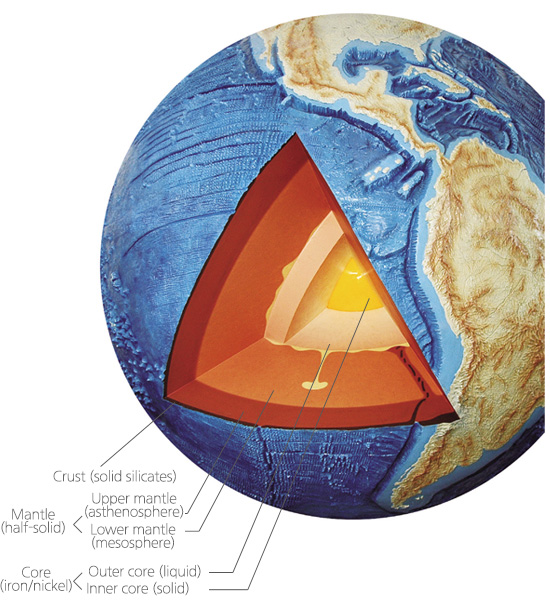The Earth
After the birth of the primordial Sun 4.6 billion years ago, its nine planets, including the Earth, were molded out of stellar dust. The early planets which were growing larger and colliding with celestial bodies of various sizes, became extremely hot with the energy generated during the collisions.
The primitive Earth, revolving around the Sun, also melted homogeneously. As the frequency of collisions decreased, the Earth cooled. This resulted in a concentric zonal structure in its interior, due to the difference of specific gravity among the partly solidified materials. The mantle, then, started to emit thermal energy through the plate-to-plate boundaries where the crust is thinner and/or fractured. Due to convection of the mantle, the continents drifted across the Earth's surface, sometimes colliding and sometimes separating.
Energy in the Earth's interior is mainly heat energy which accumulated during its formation, and is therefore limited. The planet Mars, born at almost same time as the Earth, is a smaller brother planet that lost most of its interior thermal energy a long time ago, and now is internally at rest. In the distant future, our Earth will become more like Mars, but until then the continents will drift ceaselessly over the surface until the energy is exhausted. As surrounding conditions change, rocks on Earth are being recycled continuously, crossing the boundaries among three main rock classes.

Cool-downed Mars
Mars was formed at about the same time as Earth, but because of its relatively small size, it has already exhausted its heat energy a long time ago, and its internal activities have cooled down.


Major plates that form the crust and topography related to plate tectonics
The crust is divided into about 10 plates, and the plates move according to the motion of the mantle. Internal energy is released at the plate boundaries, and various topographic features are formed through volcanic and seismic activities.